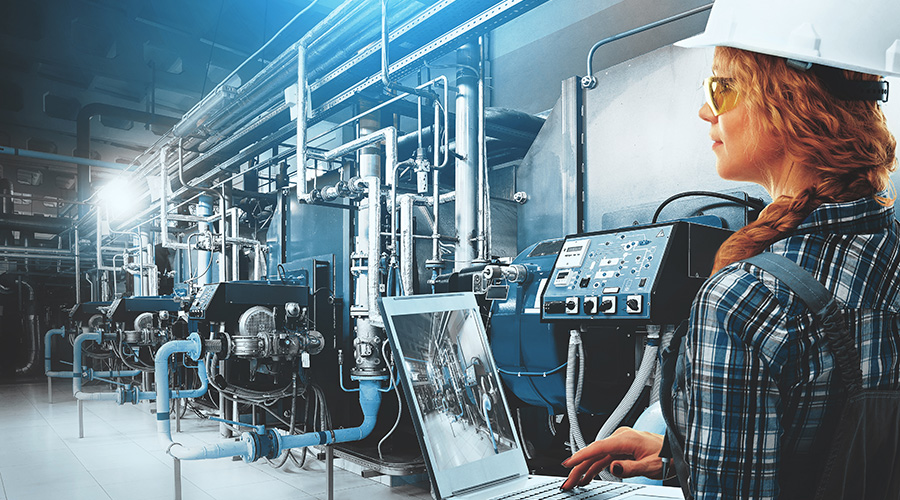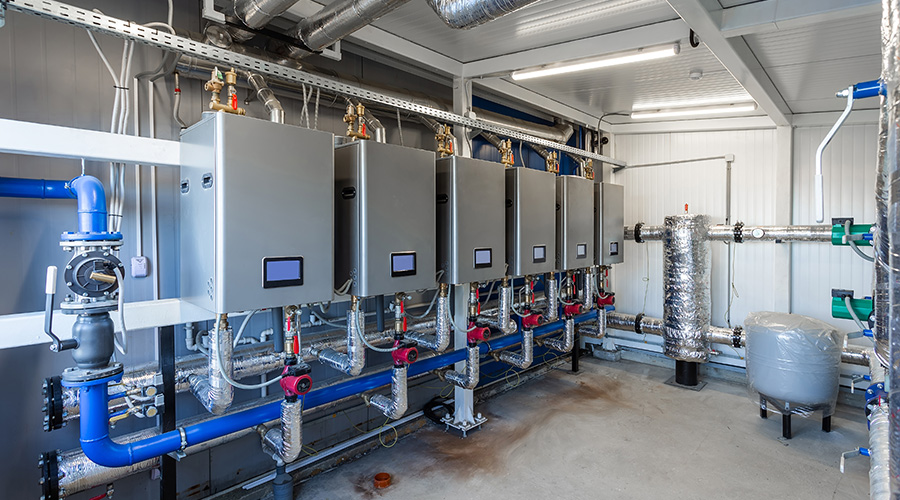Mississippi State Converts Steam Plant to Condensing Units
The first and most significant step the university took to reduce its HVAC-related energy costs involved the multi-million dollar conversion of the central steam plant to high-efficiency, hot-water condensing units. The steam plant served for years as the primary heat provider to almost 40 campus facilities with about 3.5 million square feet of space.
"Our steam plant was built in the mid-1920s and has a long history of providing heating and steam needs for the campus," Hardy says. "(The plant's) reached out with steam distribution through tunnels across campus, and with that type of distribution, there have been a lot of advances made. Over time, a system like that can become quite inefficient, even with the best maintenance practices."
The engineering department played a significant role in the design and planning of the conversion. The engineering manager at the time helped specify the type and size of equipment required to replace the older steam boilers. In-house technicians performed most of the work, but some elements of the project required outsourcing.
"We don't outsource anything in terms of core maintenance and operations," Hardy says. "The reason we'll outsource on a project is, a lot of times, if you look at the work profile and a large project comes along, there's a peak of man hours and resources needed, and you're not going to staff up for one project."
The university replaced two steam boilers with 14 condensing, high-efficiency boilers. The old boilers operated at about 80 percent efficiency, while the new units operate at Btu ratings in the mid-90s. The university experienced a dramatic reduction in Btu per square foot since the new boilers were installed, lowering its electric and natural gas consumption from 162,000 Btu per square foot in 2006 to 102,000 by 2012.
"If you run the boilers in the right return temperatures and the right scenarios, you can find some real efficiencies, which is evidenced by the fact that our large-scale steam plant saw an 80 percent natural gas drop," Hardy says.
The university's approach to chiller upgrades differs somewhat from its approach to boilers. Because of the significant costs associated with buying chillers, the university bases its decisions on physical condition more than efficiency ratings.
"A lot of times, condition is the reason we replace a chiller," Hardy says. "Chillers can be pretty pricey. A very large centrifugal chiller that's 800,000 tons or more is a big investment. A lot of times on those units, at least as we've seen on the centrifugal, water-cooled systems, if you buy one off the shelves from major manufacturers, you're going to have a lot of
performance improvements.
"But our infrastructure isn't so old that there is much of an efficiency bump. If you have a 30- to-40-year-old unit, then we would look at replacing it. Those things have a pretty long life cycle. The air-cooled units, a lot of times you put too much investment in them, it's expensive to go out and get something new."
Related Topics:














